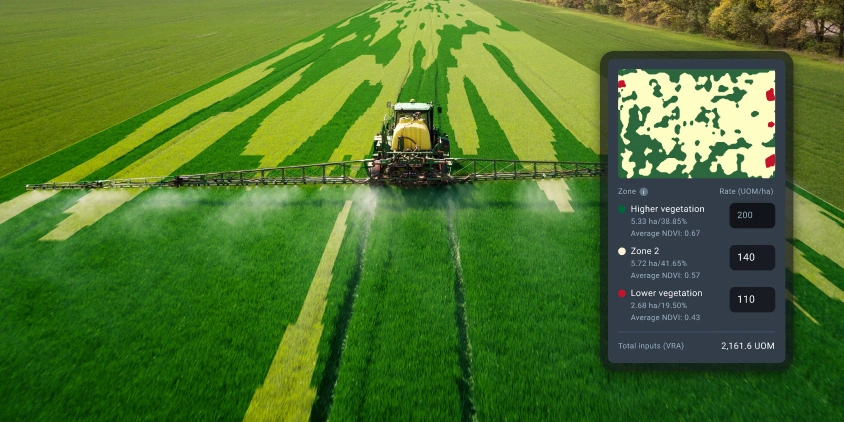
Variable Rate Fertilizer: How To Use & Benefit From It
In the high-stakes game of modern farming, variable rate fertilizer application becomes a must-have. In a single real-world field, sandy areas might need more potassium, while clay-rich areas might need an extra dose of phosphorus. Variable rate fertilizer technology, which tailors nutrient distribution to the specific needs of each field zone, steps in as the problem solver. Using a blend of soil analysis, crop health monitoring, and historical yield data, variable rate technology creates a nutrient roadmap. Digital precision agriculture platforms have democratized access to variable rate fertilizer software, allowing farms of all sizes to adopt the technology where improved environmental footprint, reduced costs, and increased yields harmoniously coexist.
What Is Variable Rate Fertilizer Application And Why Use It?
Variable rate fertilizer application (VRFA) is a precision agriculture technique that tailors fertilizer use to the specific needs of different areas within a field. This approach recognizes that soil fertility, nutrient availability, and plant responses can vary significantly across a single field. By applying fertilizer at variable rates, growers can address the heterogeneity of their land and achieve optimal nutrient distribution with minimal waste.
VRFA can improve its use efficiency and reduce costs, which is especially important given rising fertilizer prices. Additionally, more efficient nitrogen management, particularly through variable rate fertilizer application, can reduce the need for pesticides, herbicides, growth regulators, and other inputs .
To get started, focus on non-uniform fields that offer the highest potential for benefit. Combine soil test results with space-derived data to outline management zones with relatively uniform topography, soil characteristics, and productivity potential. When segmenting the field, consider farm equipment limitations to ensure proper variable rate fertilizer allocation across zones with different shapes and sizes.
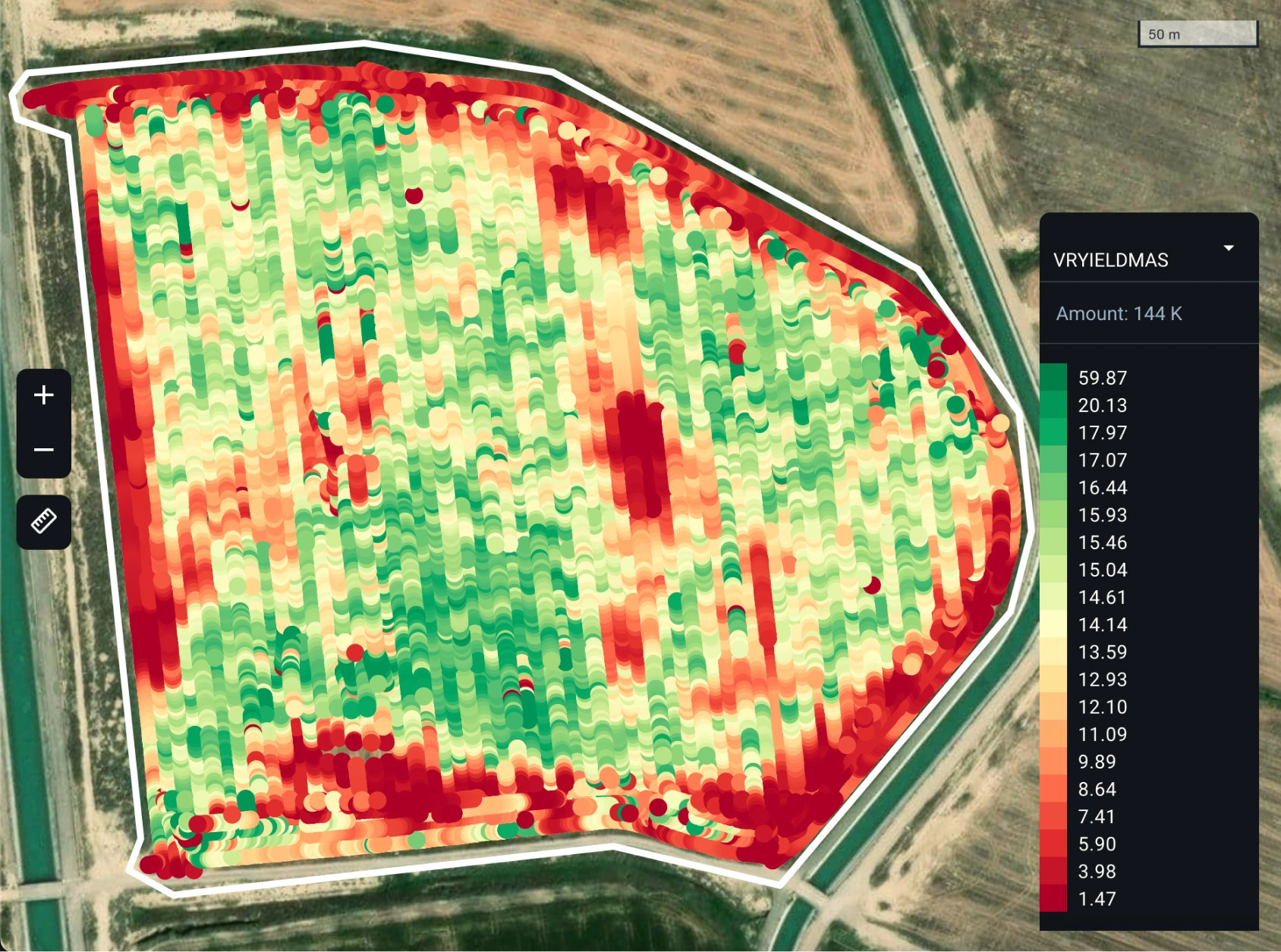
Although it may appear difficult at first, switching to variable rate technology (VRT) is a worthwhile investment. With the variable rate fertilization, software algorithms determine the management zones based on your field conditions and requests, and agricultural equipment applies fertilizer precisely where needed; hence, you work smarter, not harder.
Benefits Of Variable Rate Fertilizer Application
Variable rate fertilizer technology is a practical solution that offers real benefits to commercial agricultural operations. These are some of them:
- Balanced soil nutrition. Variable rate technology in fertilizer use ensures that crop feeding is applied exactly where it’s needed, which means optimal nutrient levels across fields — neither deficiencies nor buildup.
- Increased yield potential. The precise use of organic and synthetic fertilizers can lead to more robust crop growth and higher yields. VRFA also improves soil health and fertility, which increases yield potential.
- Cost-effective fertilizer usage. Variable rate technology prevents unnecessary application both in areas with lower nutrient demands and in areas where productivity potential is insufficient to justify fertilization. Thus, variable rate fertilizer promotes significant savings over time, especially on large-scale operations.
- Higher profitability. Higher yields and lower costs brought about by VRFA lead to farming’s increasing profitability. Research shows that variable fertilization can significantly outperform uniform fertilization in terms of net income, especially in high-yield regions .
- Reduced environmental footprint. Optimizing fertilizer use is crucial for reducing greenhouse gas emissions, combating soil salinization, and preventing water pollution. Variable rate fertilizer spreading helps protect local ecosystems and aligns farming practices with environmental conservation efforts.
How To Make Variable Rate Fertilizer Work For Your Fields
Effective variable rate application of fertilizers is about precision at every stage. By focusing on your land’s needs, selecting the right equipment, and using advanced software, you can improve both your crop yield and resource use.
Recognize Your Land Specifics And Crop Needs
Recognizing your land’s needs for variable rate fertilization requires a keen eye for field heterogeneity. Timely field inspections are essential, regardless of your fertilizer application method. Skipping this critical step can lead to unwanted results, from resource waste to compromising crop health.
Observe patterns in crop growth, soil moisture retention, and yield data across your acreage. These visual cues often indicate underlying differences in soil composition and nutrient availability.
While many growers invest much in soil testing, few fully utilize the acquired data for variable rate fertilizer allocation. To avoid this pitfall, combine visual insights with soil testing data so you can better understand your land’s fertilizer requirements.
Equip Your Farm With Accurate Variable Rate Machinery
Transitioning to variable rate farming requires the right agricultural machinery. For example, you may purchase a tractor equipped with an onboard computer and a rate-adjustable spreader or sprayer. For even greater accuracy, consider a self-propelled spreader or sprayer. Variable rate application sprayers (for liquid fertilizers) typically can switch rates faster than spreaders (for solid fertilizers), thus offering a higher level of control.
When selecting equipment, focus on compatibility with your existing setup and the specific needs of your crops. The initial investment in machinery with VRFA support pays off through improved efficiency and reduced input costs.
Find The Right Software For Generating Variable Rate Fertilizer Maps
What do most farmers expect from their VRF map-generating software? It should analyze built-in and imported data, generate prescriptions, and integrate easily with their farm machinery to ensure precise fertilizer distribution. EOSDA Crop Monitoring offers it all, so you can optimize input usage, boost yields, and maintain long-term soil health.
Let’s explore in detail the three main options for creating variable rate fertilizer prescriptions in EOSDA’s agriculture platform.
Nitrogen VRA Maps
Nitrogen VRA maps offer a snapshot of your field’s current vegetation state. They are generated based on a single satellite image, which users can select to ensure it’s the most relevant to their actual situation. This feature, allowing for targeted and efficient nitrogen fertilizer application, is particularly beneficial for addressing deficiencies as a limiting factor for crop growth in specific areas of your field.
Nitrogen VRA maps are ideal for winter crops such as rapeseed and wheat, which typically require multiple nitrogen applications after overwintering. On top of that, these prescriptions can be used to apply growth regulators in areas with high NDVI values, adding another layer of crop management.
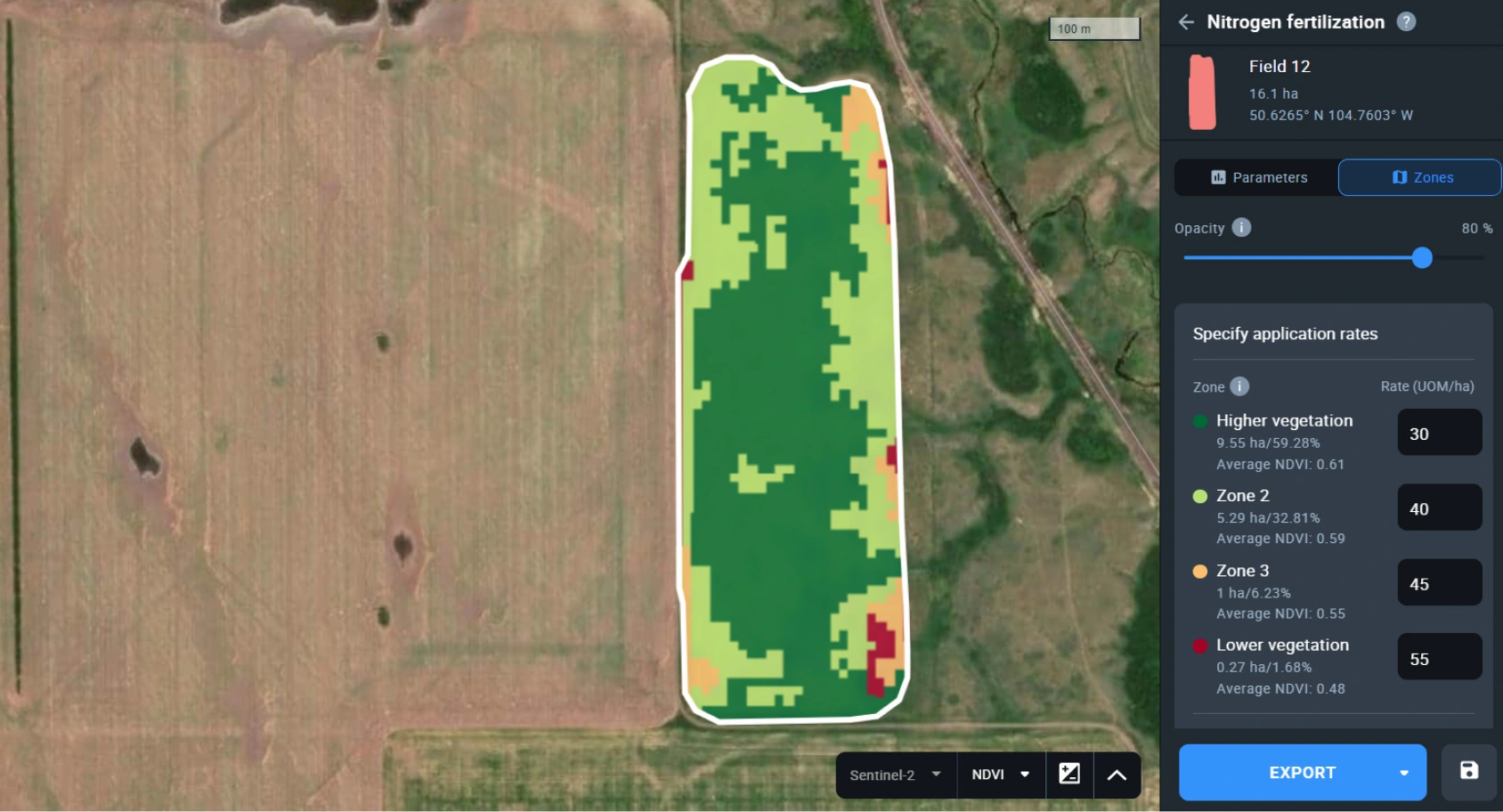
P&K VRA Maps
P&K maps give a comprehensive view of your field’s productivity over an extended period. They are based on cloud-free satellite images of the site for a selected period of up to seven years. Such an extensive dataset allows the platform’s algorithm to analyze average productivity across different sections of the field and accurately guide the variable rate fertilizing with phosphorus, potassium, and other nutrients.
One of the key advantages of P&K maps is their flexibility. Suppose a farmer knows that any of the past seven years had significant limiting factors affecting overall plant development (such as drought, floods, or other natural disasters). In that case, they can simply exclude that year from the map-generating process. This ensures higher accuracy in the resulting variable rate fertilizing prescriptions, taking into account only the relevant limiting factors for the field.
This EOSDA Crop Monitoring’s feature is also invaluable for conducting detailed soil studies. It can help identify areas with varying nutrient content, soil compaction, or other factors that might cause uneven plant development in certain zones. This information empowers farmers to address long-term soil fertility issues and optimize their field management strategies.
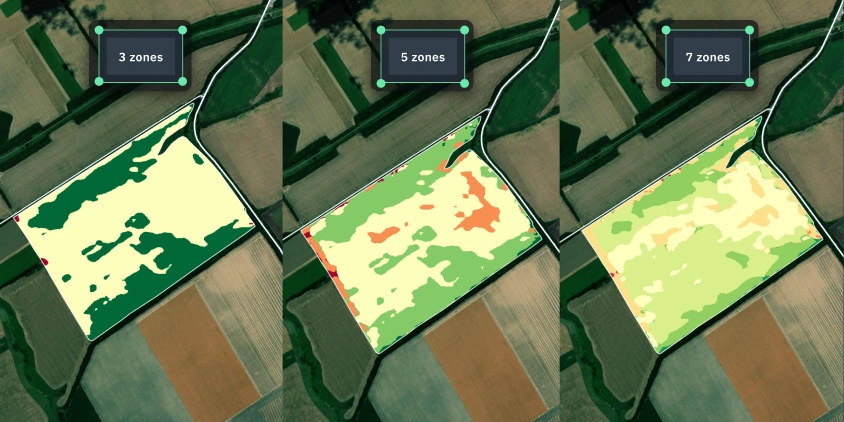
Map Builder
With Map builder, farmers can easily design and create their own variable rate fertilizer prescriptions based on data from their farm equipment (for example, sensor-collected readings of soil nutrient levels). Simply import the file from farm equipment into EOSDA Crop Monitoring and generate a map in a few clicks. You can tailor the level of detail to your exact needs by selecting the number of management zones (up to seven). The feature supports a wide range of file formats commonly used in agricultural machinery, including SHP, SHX, DBF, PRJ, and ISO-XML.
The versatility of Map builder extends beyond single-nutrient fertilizer distribution. It can also be used to create variable rate prescriptions for NPK fertilizers and liquid compounds of various macro- and microelements. This tool even allows for the integration of pest control and disease treatment applications, which creates a comprehensive solution for crop management.
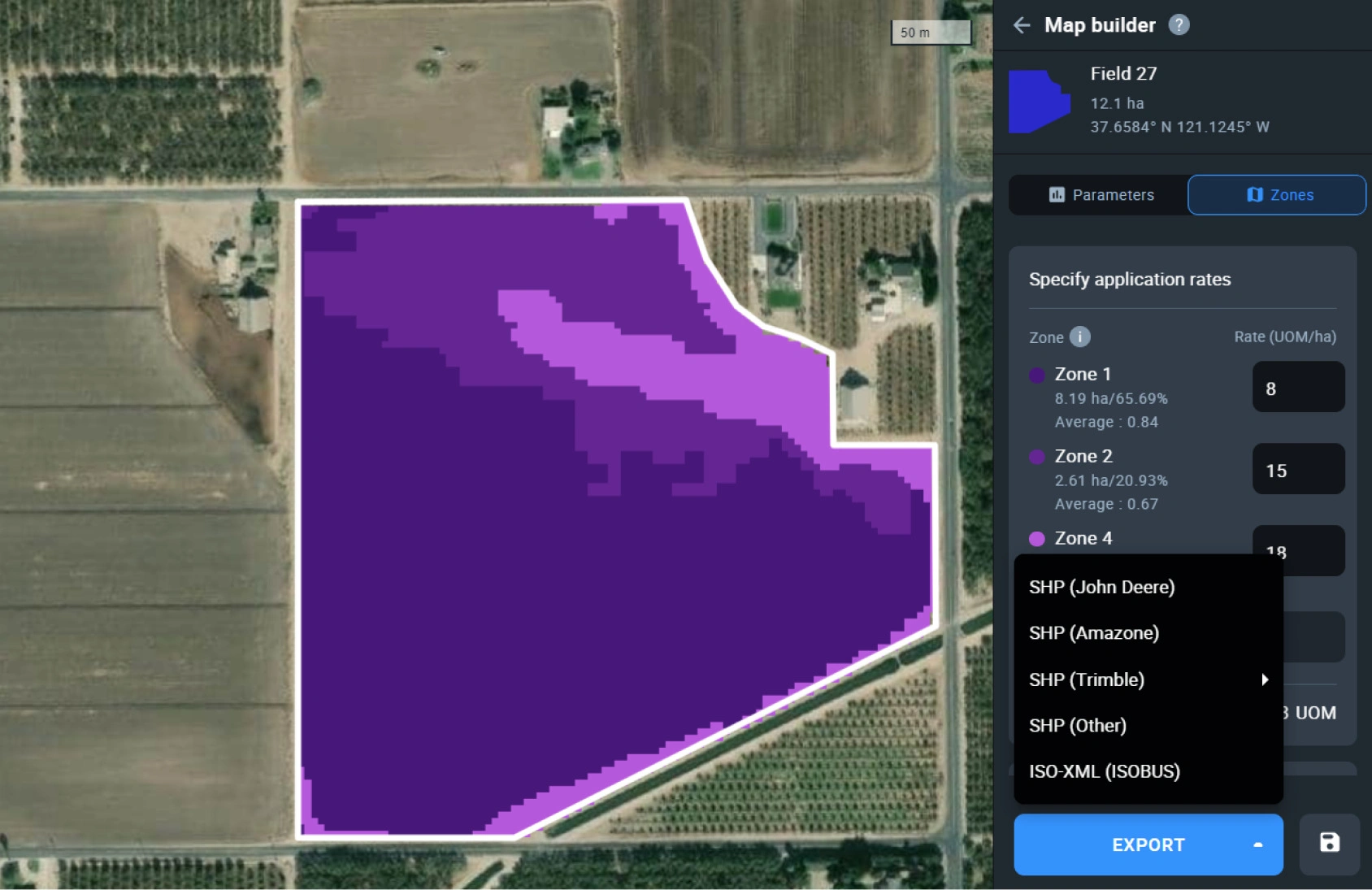
Implement VRT Fertilizer Application And Evaluate Outcomes
Variable rate fertilization in your field is the culmination stage of VRT implementation. Advanced equipment now traverses fields, dispensing nutrients at precisely calculated rates and ensuring each plot receives optimal fertilizer amounts.
For the best results of variable rate fertilizing, farmers should closely track applications and monitor crop response throughout the growing season. Our farm monitoring solutions help agriculture cooperatives, large-scale farmers, and landowners do it much easier. Season after season, the wealth of information and ever-evolving technology direct VRF improvements. With practice and refinement, variable rate fertilization can become an indispensable tool for precision farmers.
About the author:
Kateryna Sergieieva has a Ph.D. in information technologies and 15 years of experience in remote sensing. She is a Senior Scientist at EOSDA responsible for developing technologies for satellite monitoring and surface feature change detection. Kateryna is an author of over 60 scientific publications.
Recent articles
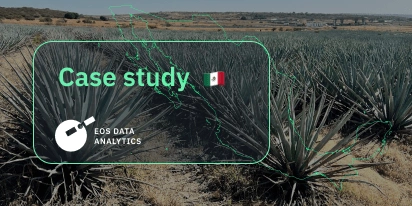
Digital Tools Improve Soil Health And Yields In Mexico
EOSDA and ITTA supported a Guanajuato farm with contour-line planning, monitoring tools, and practical guidance to reduce soil erosion and improve yields in the long run.

Analyze 2025 & Plan Your Best Year Yet: LandViewer Christmas Offer
It’s the most wonderful time of the year! The Christmas holidays are here, and so is your chance to analyze 2025 and plan a prosperous 2026 with more affordable Pro plans in LandViewer.
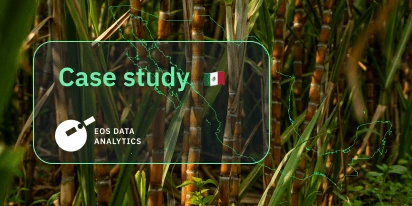
EOSDA Models Climate Change Impact On Sugarcane Yields
EOSDA modeled future temperature, rainfall, and other climate impacts on Veracruz sugarcane. The results help growers plan long-term adaptation strategies, including timing, varieties, and irrigation.